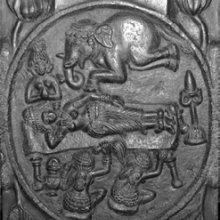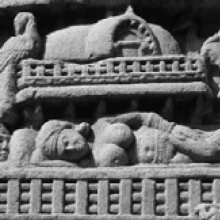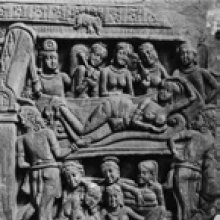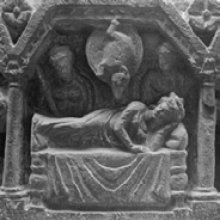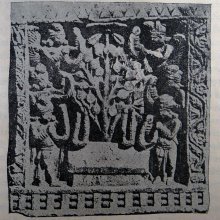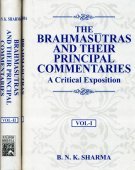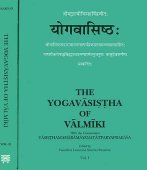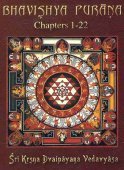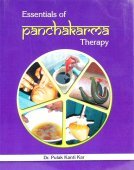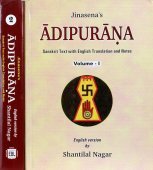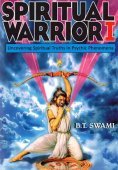Dream, Dreaming: 5 definitions
Introduction:
Dream means something in Hinduism, Sanskrit, Jainism, Prakrit. If you want to know the exact meaning, history, etymology or English translation of this term then check out the descriptions on this page. Add your comment or reference to a book if you want to contribute to this summary article.
Images (photo gallery)
(+4 more images available)
In Hinduism
Shaivism (Shaiva philosophy)
Source: SOAS University of London: Protective Rites in the Netra TantraDream symbolism in the Svacchanda-tantra (chapter 4).—Brahmins have long been interpreters of dreams, often doing so for kings. They look to dreams to uncover individualized symbols and desires and use predetermined cultural markers to assess dreams as auspicious (śubha) or inauspicious (aśubha). Once categorized, rites are performed to counter the negative effects of inauspicious dreams. [...] Before interpreting dreams, the Mantrin himself undergoes purification rites. In order to bring another person into the secret Tantric fold, he himself must already be unified with the divine. The student too becomes purified during the night as he witnesses the Mantrin’s performance of rituals prior to sleep.

Shaiva (शैव, śaiva) or Shaivism (śaivism) represents a tradition of Hinduism worshiping Shiva as the supreme being. Closely related to Shaktism, Shaiva literature includes a range of scriptures, including Tantras, while the root of this tradition may be traced back to the ancient Vedas.
Vedanta (school of philosophy)
Source: ORA: Amanaska (king of all yogas): (Advaita Vedanta)Dreaming is denoted by the Sanskrit term Svapna, according to the Māṇḍūkyopaniṣatkārikā 3.29.—Accordingly, while discussing the dream and waking states: “Just as in the case of dreaming (svapna), the mind, which is a reflection of duality, is active because of Māyā, so the waking mind, which is [also] a reflection of duality, is active because of Māyā. [...] That very [mind, free of thought and restrained,] is fearless Brahma, [which is] the light of gnosis [pervading] everywhere. [It is] unborn, devoid of sleep and dreaming (asvapa), unnamed, formless, manifested [all] at once and omniscient. [This statement] is not figurative in any way”.

Vedanta (वेदान्त, vedānta) refers to a school of orthodox Hindu philosophy (astika), drawing its subject-matter from the Upanishads. There are a number of sub-schools of Vedanta, however all of them expound on the basic teaching of the ultimate reality (brahman) and liberation (moksha) of the individual soul (atman).
Pancaratra (worship of Nārāyaṇa)
Source: archive.org: Catalogue of Pancaratra Agama TextsDreams (of the initiate) foretell significantly what the future holds, according to the section on Omens (nimitta) in the ninth chapter of the Paramasaṃhitā: one of the older texts of the Pāñcarātra canon consisting of over 2100 verses in 31 chapters which, being encyclopedic in scope, deals with philosophy, worship routines, mantras, initiation, social behavior, temple-building, etc.—Accordingly: In dīkṣā, or at the commencement of any important undertaking, it is important to be alert to certain omens (nimitta) (1). [...] Also, dreams of the initiate foretell significantly what the future holds (11-33). [...] In all, one should be prepared to read all signs with care for what they can tell of the outcome of an important undertaking (40-44).

Pancaratra (पाञ्चरात्र, pāñcarātra) represents a tradition of Hinduism where Narayana is revered and worshipped. Closeley related to Vaishnavism, the Pancaratra literature includes various Agamas and tantras incorporating many Vaishnava philosophies.
Mantrashastra (the science of Mantras)
Source: archive.org: Catalogue of Pancaratra Agama Texts (mantra)Dreams may be interpreted as “omens” (by the aspirant during the initiation period), as discussed in chapter 52 of the Shri-prashna-samhita: a Pancaratra text comprising 5500 Sanskrit verses covering a number of subjects ranging from selecting a temple site through building and furnishing it to sanctifying and maintaining worship in the sacred complex.—Description of the chapter [mantroddhāra-vidhi]: [...] The bulk of the chapter gives the general directions for the practices to be undertaken by one who does japa and homa as an initiating step toward the eventual mastery of their mantra. The closing lines list good (94-100) and bad (101-103) dreams that may be interpreted as omens by the aspirant during this initiating period as he does the homa.
Mantrashastra (शिल्पशास्त्र, mantraśāstra) refers to the ancient Indian science of mantras—chants, incantations, spells, magical hymns, etc. Mantra Sastra literature includes many ancient books dealing with the methods reciting mantras, identifying and purifying its defects and the science behind uttering or chanting syllables.
In Jainism
Jain philosophy
Source: archive.org: Anekanta Jaya Pataka of Haribhadra SuriDreams in Jain philosophy are not (altogether) an unreality.—The causes of a dream are (iv) the objects experienced, seen, thought of and heard, (v) the results of prakṛti such as phlegm etc., (vi) a celestial being, (vii) a country having a great quantity of water, (viii) merit and (ix) demerit. Hence a dream is not a non-entity like a flower in the sky.—Cf. Anekāntajayapatākā-prakaraṇa [Vol. II, P. 75, ll. 23-24]
-
See also (Relevant definitions)
Starts with: Dream state.
Query error!
Full-text (+1109): Svapna, Svapnavastha, Svapa, Suptajnana, Duhsvapna, Milam, Samvesha, Svapnavicara, Darshana, Asvapna, Jagrat, Suptavijnana, Svapnopama, Svapnavicarin, Sapana, Susvapna, Swapn, Svapnasrishti, Svapnanta, Svapnadarshana.
Relevant text
Search found 444 books and stories containing Dream, Dreaming, Dreams, The dream; (plurals include: Dreams, Dreamings, Dreamses, The dreams). You can also click to the full overview containing English textual excerpts. Below are direct links for the most relevant articles:
Parables of Rama (by Swami Rama Tirtha)
Story 154 - Contrary cures contrary < [Chapter XXIV - Thought Power]
Story 127 - The Result of Greed < [Chapter XIX - Selfishness]
Story 156 - Heaven or Hell our Own Creation < [Chapter XXIV - Thought Power]
Brahma Sutras (Shankaracharya) (by George Thibaut)
III, 2, 4 < [Third Adhyāya, Second Pāda]
III, 2, 3 < [Third Adhyāya, Second Pāda]
III, 2, 6 < [Third Adhyāya, Second Pāda]
World Journal of Pharmaceutical Research
Dream interpretation: Ayurveda vs. modern psychology perspectives. < [2022: Volume 11, December special issue 17]
Concept of swapna and its process in ayurveda prospective < [2019: Volume 8, August issue 9]
Effect of nidra on human body – a review article < [2022: Volume 11, October issue 13]
AYU (Journal of Research in Ayurveda)
‘Swapna’ in the Indian classics: Mythology or science? < [Volume 31 (2); 2010 (Apr-Jun)]
Meditation: Process and effects < [Volume 36 (3); 2015 (Jul-Sep)]
Editorial < [Volume 31 (2); 2010 (Apr-Jun)]
Agni Purana (by N. Gangadharan)
Chapter 229 - The significance of Dreams (svapna-adhyāya)
Chapter 43 - Installation of deities in the temples
Chapter 84 - Mode of Initiation for Emancipation (nirvāṇa-dīkṣā)
The Malaysian Journal of Medical Sciences
Jungian Dreams: A Tool for Research and Treatment of Social Phobia < [Volume 16 (issue 4), Oct-Dec 2009]
Risk Factors and Psychosocial Correlates of Negative Dreams in Cardiac Rehab < [v.27(1): 1–138 2020 Feb]
Quantum Physics View on Electromagnetic and Quantum Fields in Brain < [v.27(1): 1–138 2020 Feb]
Related products
(+2 more products available)
.jpg)
